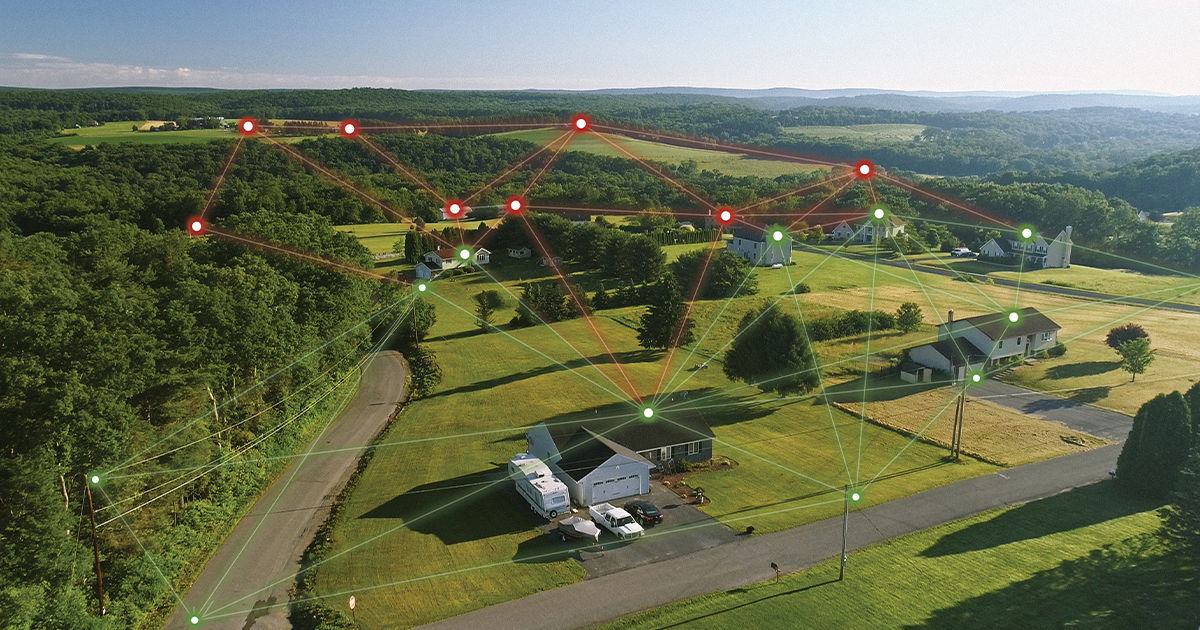The Need for Speed
 Broadband – it’s not just for web surfing anymore.
Broadband – it’s not just for web surfing anymore.
Having access to high-speed internet is becoming essential for more than just sharing funny memes and videos. Small businesses use it for quick and easy payments, doctor visits can take place right through an iPad or PC and education harnesses the power of connectivity at just about every grade level.
Unfortunately, not everyone has access to high-speed internet. And even for some that do, that access can be lacking tremendously. That’s what Jenni Smith and the employees at Oklahoma Electric Cooperative in Norman, Okla., discovered.
“We have a lot of schools in our rural areas that have terrible internet service,” said Smith, who serves as the manager of enterprise applications for OEC. “Also, a lot of the current providers, and only providers that are out in the rural areas, are really overcharging. They provide poor service, very slow speeds and they’re just charging too much. We’re big about wanting to serve our community and membership, and this is a service that we can provide them.”
As OEC was getting ready to run fiber lines to their substations in order to help improve connectivity, the need for high speed broadband to their community drove the organization to expand their rollout and get members online.
Building Interest in Broadband
Implementing a broadband rollout is a large undertaking for any organization. The physical rollout and staffing requirements need to be determined. Every organization wants to use resources efficiently and minimize added work for staff. One thing that can dramatically help with a broadband rollout? Interest.
With the help of NISC’s SmartHub Connect, which combines the customer engagement portal of SmartHub with the marketing and analytics of LeadAgent, OEC was able to determine areas of higher interest vs. lower interest in their territory by opening zones and having members sign up through SmartHub.
Members can then sign up through SmartHub, where they’ll see a “Check My Availability” button. This button will allow them to sign up for service or sign up to be notified when broadband will be available in their area.
“What that does is that it goes into LeadAgent, and we can see how many people in each of these zones have signed up for interest,” Smith said. “If you have a zone of let’s say 3,000 and 1,500 people have signed up saying they want service in that area through SmartHub, great. Or if we see another zone that has 3,000 people and only 200 have signed up, we probably won’t go to that zone as fast.”
Through integration with NISC’s LeadAgent, OEC has access to the number of signups in each zone, helping them determine which zone has more members interested in using their broadband service. The zones with higher interest tend to have a higher “take” rate, meaning they’ll be more financially feasible, helping to fund broadband rollouts to the less interested areas.
Another benefit for OEC is that now they have a repository of data that they can then use for helping communicate not only broadband, but other cooperative initiatives. OEC is also offering their broadband service to those that aren’t current electric members, adding another opportunity for marketing and communication.
“We have all of this data in LeadAgent for marketing and communication,” Smith said. “I believe we had, before we even started, like 14,000 members that had already signed up to say they were interested and wanted updates. All of that data is stored in LeadAgent, and with LeadAgent and Messenger, we can communicate with all of them.”
Signing Up in a Snap
It may seem like a simple step in the process, but one critical step in a broadband rollout is signing up. A sign up process that’s difficult or time consuming can be frustrating and lead to unfinished submissions or a complete dismissal. OEC was able to leverage the customer engagement functions of SmartHub Connect to make signing up for broadband a snap.
With SmartHub Connect, OEC’s members can use SmartHub to sign up for broadband service, 24 hours per day, seven days per week. All a member needs to do is click on the link and provide some basic info, and they’re signed up.
Smith said the convenience of the online signup is a big factor. Without the online signup, it would require a call to the office during normal business hours to get put on the list for broadband service. OEC has seen an increase in signups after business hours, as members are able to sign up at their convenience.
The convenience of online signup isn’t just for the members, but for the cooperative as well. Rolling out a broadband project requires significantly more support, either from existing employees or new hires. Online signups limit the number of new hires an organization needs to add for fiber services and helps current employees focus on their daily tasks.
“We’ve done 1,400 connects, and 659 have been done online,” Smith said. “A fiber connect takes an average of 3.5 min. Basically, since Feb. 1, we’ve saved 38.5 hours of phone time just because they can go online and sign up.”
Currently, OEC is only offering access to high-speed internet, but looks to add other broadband services like TV and phone in the near future. The customer engagement and efficiency of SmartHub Connect will serve as a critical piece, as a signup phone call selecting a TV package can take much longer than an internet signup call. OEC will also have access to member data in order to market these new services and gauge interest in their service area.
Broadband is an essential service, and beginning a broadband rollout is a big undertaking. The role technology can play in a successful rollout is tremendous — increasing efficiency, communication and customer service, even before the fiber lines are laid.
